I want to make a gradient that covers the whole canvas whatever the angle of it.
So I used a method found on a Stack Overflow post which is finally incorrect. The solution is almost right but, in fact, the canvas is not totally covered by the gradient.
It is this answer: https://stackoverflow.com/a/45628098/5594331 (You have to look at the last point named "Example of best fit.")
In my code example below, the yellow part should not be visible because it should be covered by the black and white gradient. This is mostly the code written in Blindman67's answer with some adjustments to highlight the problem.
I have drawn in green the control points of the gradient. With the right calculations, these should be stretched to the edges of the canvas at any angle.
var ctx = canvas.getContext("2d");
var w = canvas.width;
var h = canvas.height;
function bestFitGradient(angle){
var dist = Math.sqrt(w * w + h * h) / 2; // get the diagonal length
var diagAngle = Math.asin((h / 2) / dist); // get the diagonal angle
// Do the symmetry on the angle (move to first quad
var a1 = ((angle % (Math.PI *2))+ Math.PI*4) % (Math.PI * 2);
if(a1 > Math.PI){ a1 -= Math.PI }
if(a1 > Math.PI / 2 && a1 <= Math.PI){ a1 = (Math.PI / 2) - (a1 - (Math.PI / 2)) }
// get angles from center to edges for along and right of gradient
var ang1 = Math.PI/2 - diagAngle - Math.abs(a1);
var ang2 = Math.abs(diagAngle - Math.abs(a1));
// get distance from center to horizontal and vertical edges
var dist1 = Math.cos(ang1) * h;
var dist2 = Math.cos(ang2) * w;
// get the max distance
var scale = Math.max(dist2, dist1) / 2;
// get the vector to the start and end of gradient
var dx = Math.cos(angle) * scale;
var dy = Math.sin(angle) * scale;
var x0 = w / 2 + dx;
var y0 = h / 2 + dy;
var x1 = w / 2 - dx;
var y1 = h / 2 - dy;
// create the gradient
const g = ctx.createLinearGradient(x0, y0, x1, y1);
// add colours
g.addColorStop(0, "yellow");
g.addColorStop(0, "white");
g.addColorStop(.5, "black");
g.addColorStop(1, "white");
g.addColorStop(1, "yellow");
return {
g: g,
x0: x0,
y0: y0,
x1: x1,
y1: y1
};
}
function update(timer){
var r = bestFitGradient(timer / 1000);
// draw gradient
ctx.fillStyle = r.g;
ctx.fillRect(0,0,w,h);
// draw points
ctx.lineWidth = 3;
ctx.fillStyle = '#00FF00';
ctx.strokeStyle = '#FF0000';
ctx.beginPath();
ctx.arc(r.x0, r.y0, 5, 0, 2 * Math.PI, false);
ctx.stroke();
ctx.fill();
ctx.beginPath();
ctx.arc(r.x1, r.y1, 5, 0, 2 * Math.PI, false);
ctx.stroke();
ctx.fill();
requestAnimationFrame(update);
}
requestAnimationFrame(update);canvas {
border : 2px solid red;
}<canvas id="canvas" width="300" height="200"></canvas>